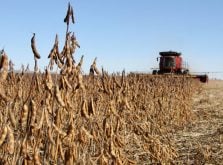SASKATOON – Scientists are scrambling for money while governments give thousands of dollars to producer groups who don’t generate any solid research, says an Agriculture Canada scientist.
Provincial forage associations do a disservice to producers by taking money formerly given to scientists and making farmers feel they’re getting research necessary for their area, said Surya Acharya.
The scientist said it’s frustrating because in surveys farmers say they generally have enough forage research.
“They look at their local demonstration site and think it’s generating usable scientific information.”
Read Also

Manitoba extends Crown land rent freeze
Manitoba government links the continued rental rate freeze on grazing and forage leases to economic and environmental challenges facing the industry
In reality, local forage associations generate little beyond creating “looking plots,” said Acharya.
No precise guidelines
Because the demonstration plots do not follow scientific guidelines, or use exact seeding equipment, they don’t create any useful data, new plant varieties, or insect control information, he said.
Hay, forages, pasture and seed were worth $825 million a year over the past five years in Alberta alone, said Myron Bjorge, the province’s supervisor of field crops.
The Alberta government gives forage associations almost $300,000 each year. Each forage association averages about $30,000. For some that’s almost their entire budget, but others get more money from the federal government, Ducks Unlimited, municipalities, memberships and from the Canada-Alberta Environmentally Sustainable Agriculture Agreement.
The forage associations have hundreds of thousands of research dollars and no researchers to guide them, Acharya said.
He is co-ordinator for forage research trials in Western Canada, and he shakes his head at the way some plots are seeded or harvested.
“I take it so seriously and I see others do it haphazard and I feel very sad,” he said.
Kyle Greenwood, manager of the Grey Wooded Forage Association in Rocky Mountain House, agreed the “statistical validity of the plots is not as strong.”
But he pointed out farmers are more likely to try a new forage variety if they see the crop grown on a field scale rather than tiny research plots.
Jackie Fortier is the co-ordinator for the Pembina Forage Association and the Gateway Research Organization in Westlock.
She said their demonstration plots are designed to take sometimes confusing scientific data and deliver it to farmers in a useful form: “I think we’re doing a service. A lot of the information is not easily acceptable to farmers.”
But if researchers don’t get more private support there will be little new research to demonstrate, said Acharya.
“Forage for some reason has no support. We never had much private money. Now we have none,” said Acharya.
Joanna Fraser, a federal forage scientist, wrote in a recent Alberta Forage Council newsletter: “Scientists in programs that fail to secure such funding will likely be targets for elimination in further budget cutbacks as has recently happened to forages at the Lethbridge Research Centre.”
Unenviable position
Forage is big business, but it is in the unenviable position of being an “intermediate” product, said Bernie Sontag, director of the Lethbridge centre.
“Forage production in Western Canada has taken a major hit,” he said of the latest budget cuts.
Reg Kucey, acting program director, said over the next three years there will be 35 forage positions cut from the research budget.
Forage lost about 27 percent of its budget.














